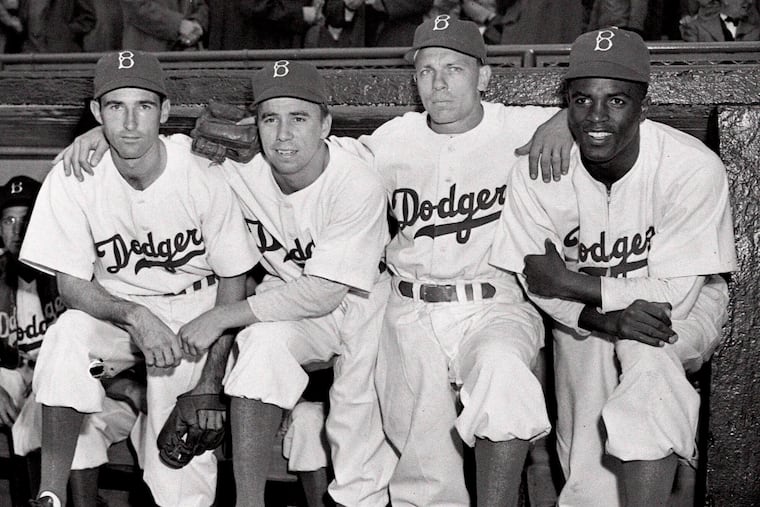As another Jackie Robinson Day approaches, the number of Black major leaguers keeps falling
April 15 is Jackie Robinson Day, marking the date he broke baseball's color barrier. But the number of African Americans playing the game keeps shrinking — a result of some unpleasant truths.

So another Jackie Robinson Day is almost upon us. Another day to celebrate the achievement of Robinson when, on April 15, 1947, he ran out to first base for the Brooklyn Dodgers, becoming the first Black player to take a position on a major-league diamond in the 20th century. At long last, progress had been made. It was, and is, an achievement worth celebrating.
And so, on the anniversary of Robinson’s feat, the baseball world celebrates. And ever since 2009, after Ken Griffey Jr. started the tradition of donning Robinson’s No. 42 in his honor, every major leaguer has worn it on April 15 to remind all of America of the man who had changed it so profoundly.
All well and good. But in many big-league cities, those changes often seem like they have barely registered. If you look at the rosters of some clubs, it almost feels like it’s still April 14, 1947, the last day of the segregated big leagues.
Here in Philadelphia, there wasn’t a single African American player in the Phillies starting lineup when the team took the field on the afternoon of April 14 last year — the eve of the 77th anniversary of Robinson’s achievement.
And Dodgers fans, who pride themselves on rooting for the franchise that had the guts to sign and promote Robinson nearly eight decades earlier, only counted one Black starter in their lineup that day: the club’s leadoff hitter — superstar shortstop Mookie Betts.
When it comes to diversity in Major League Baseball, it’s not all bad news.
According to the Associated Press, the percentage of players born outside the United States rose to 28% last season. The percentage of white major leaguers has shrunk, and the percentage of players of Latino origin was nearly 30%.
But the number of African Americans keeps shrinking. In 2023, it was an abysmal 6.2%, and last year it sunk even lower — to a meager 6% — on opening day.
As for why, well, as people say when they don’t want to confront an unpleasant truth — it’s complicated. But maybe it’s not too complicated.
In the course of researching for my book on what it was like to be Black and in the minor leagues during the 1960s and ‘70s, a couple of generations post-Robinson, I heard one story after another that highlighted the obstacles, the barriers, that answered — and continue to answer — the question pretty clearly.
One player, Chuck Stone, recalled his experiences with the Detroit Tigers organization in Lakeland, Fla., in 1971, and then in Clinton, Iowa, in ‘72, where he was not only one of the few Black people on his team but the entire town. Just finding a barber to cut his hair was an ordeal and seemingly a public event. “I’m in the barber’s chair and — it was so funny — it looked like half the town came out to watch me get a haircut.”
After the Houston Astros found themselves on the wrong side of an NAACP picket line during the 2005 World Series when they trotted out a roster that didn’t include a single African American, Stone was hired by the Astros to rectify the situation. He found plenty of prospects, but his area supervisor refused to sign off on a single one of them.
When he finally confronted his supervisor about it in 2010, the truth was laid out plain as day. “He told me to my face he would never sign a Black ballplayer,” Stone told me. Soon after, Stone was gone from the organization. Thankfully, eventually, so was the area supervisor.
Stone’s tale illustrates an unfortunate point: that we haven’t come as far as we like to think we have. And if we’d strip away the pomp and ornamentation that cushions and protects us from some uncomfortable truths, that would become all too clear.
Mitchell Nathanson is a professor of law at Villanova University and the author of “Under Jackie’s Shadow: Voices of Black Minor Leaguers Baseball Left Behind.”